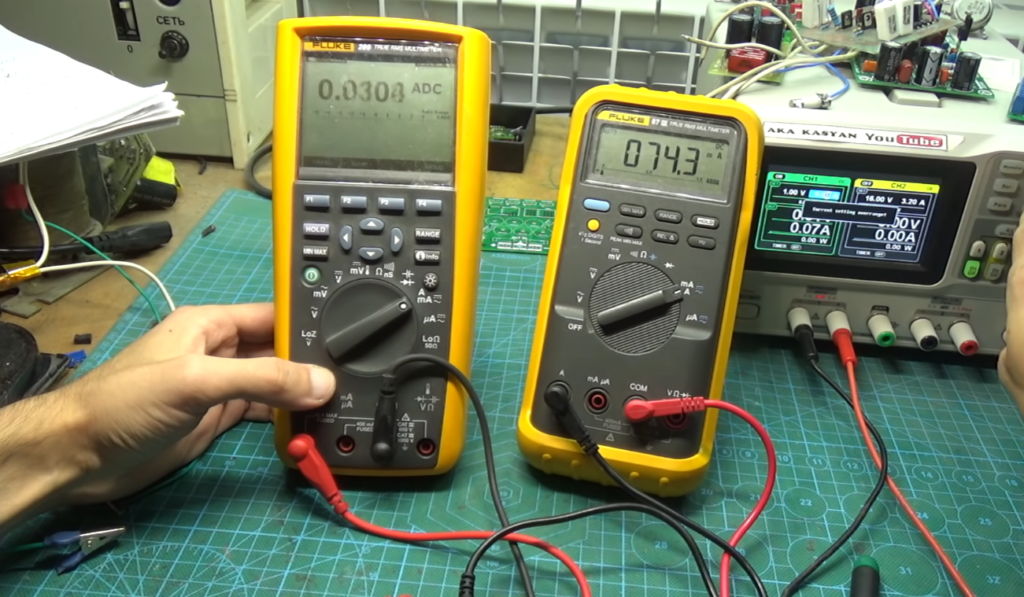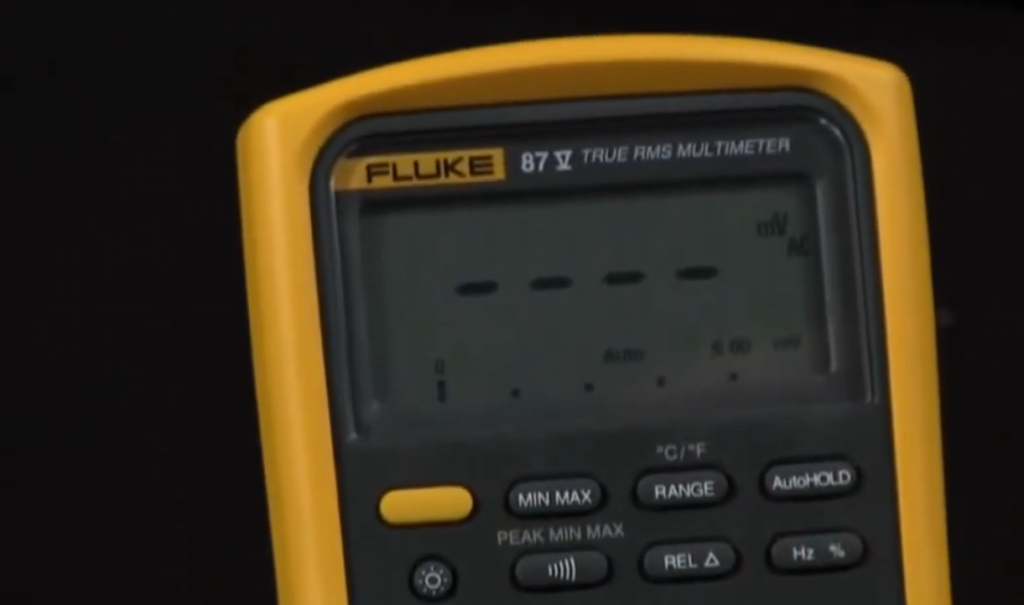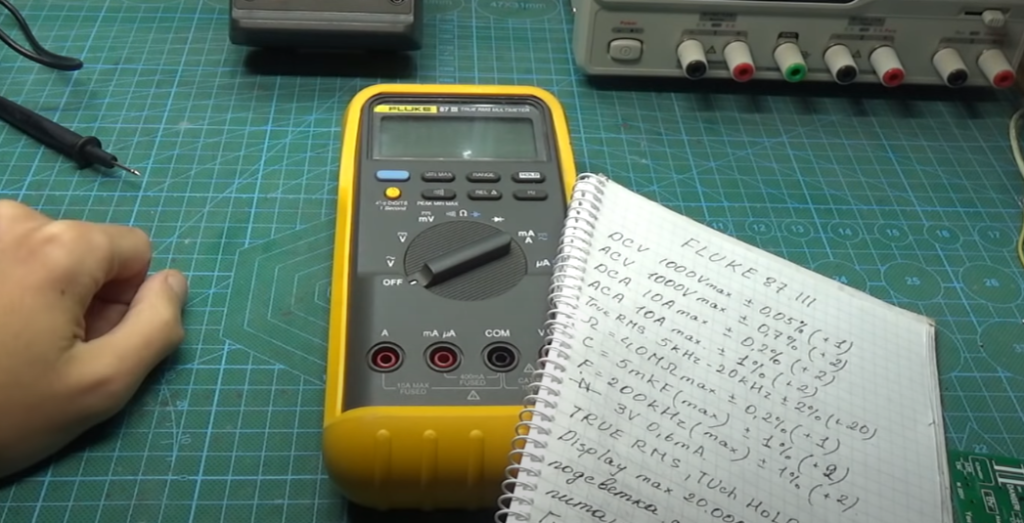Electricity is all around us, and when something goes wrong with our home’s electrical system, we need to be able to diagnose and fix the problem as quickly as possible. That’s where multimeters come in. Multimeters are essential tools for electrical work, and there are a few different types on the market. In this article, we will compare the Fluke 87 multimeter to the Fluke 87V multimeter and help you decide which one is better for your needs.
Fluke Brand in General
Fluke is a very reputable brand when it comes to multimeters, as well as other tools. They are known for their durability and accuracy. One of the most popular products Fluke offers are digital multimeters.
It can also measure continuity, capacitance, and temperature. A digital multimeter has a large digital display that makes it easy to read the measurements.
Digital multimeters are used in many different industries, including automotive, electronics, manufacturing, and telecommunications. They are used to troubleshoot electrical problems and to test the performance of electronic components.

The Fluke 87 and 87V are two of their most popular DMM models. Both have similar features and functions, but there are some key differences that may make one better suited for your needs than the other.
Fluke 87 Meter Specifications
We begin this comparison with a review of the specs for the Fluke 87. While these may look similar based on name, they are actually two different models that have been updated over the years.
Fluke 87 is a much much older model that was released in the 1980s. It is a true classic and has been used by electricians for decades. This meter measures AC and DC voltage, AC and DC current, resistance, continuity, frequency and capacitance.
The 87 has been discontinued and replaced by the 87V. Still if you want to know the differences and which one is better, read on!
Accuracy
Accuracy is by far the most important consideration when choosing a digital multimeter. After all, you need to be able to trust the readings you get from your meter.
The Fluke 87 has an accuracy of between ±(0.7% + 4) and ±(2.0% + 20). This depends on the range, frequency and function being used.
The 87 is a True RMS multimeter, meaning it can take accurate readings of AC voltage and current even if the waveform is not a perfect sine wave. This is important for many industrial applications where the power supply may be non-linear.
AC voltage can fluctuate and change shape, so it is difficult to get an accurate measurement with a standard meter. True RMS meters are designed to filter out these fluctuations and give you a more accurate reading.
Operating temperatures
The operating temperature range tells you what temperature extremes the device can withstand without being damaged or inaccurate.

The Fluke 87 has an operating temperature range of -20°C to 40°C (-4°F to 104°F). This is a pretty standard temperature range for most multimeters.
Storage temperature ranges are similar, with the Fluke 87 having a range of -40°C to 60°C (-40°F to 140°F).
Temperature affects accuracy in two ways: calibration and compensation. If the temperature of the multimeter changes, the calibration may be affected. Most multimeters are designed with temperature compensation circuitry that automatically adjusts the readings to compensate for any changes in temperature.
Display
The 87 has a large, easy-to-read digital display. Display is one of the key features that makes the multimeter worthwhile. It needs to be clear and easy to read for best results.
The 87 display has 4000 counts and updates 1 times per second. This means it can show you four digits instead of just three or two like some other meters.
Surprisingly, the 87 display is also backlit. This is a feature that is not common in older models, but it can be very helpful when working in low-light conditions.
The backlit display is one of the most notable features of the 87. It makes it much easier to use in low-light conditions.
Safety
Since the 87 is an older model, you might be wondering about its safety features. You will be surprised to find out that Fluke 87 is actually CAT III certified! This means that it can be used in up to high voltage environments without any safety concerns.
Autorange and Manual range
This model also features auto and manual ranging, meaning you can set it to automatically select the best range for the measurement you’re taking, or you can choose the range yourself.
Autorange is a great feature because it makes measurements quicker and easier. However, some users prefer manual ranging because it gives them more control over the accuracy of the measurement.
Shock Vibration
Another selling point for the 87 is that it is built to withstand a lot of abuse. It is drop resistant from a height of up to six feet and can withstand being dropped onto a hard surface.
The 87 is classified for shock vibration Per MIL-T-28800, Class II. This means that it can withstand substantial amounts of shock and is suitable for use in rugged environments.
Battery life
When working on a long project, the last thing you want is for your multimeter to die in the middle of taking measurements. This is why battery life is an important consideration when choosing a multimeter.
The Fluke 87 has a battery life of up to 400 hours, which is pretty good for a multimeter. It can be powered by a variety of batteries, including 9v alkaline, NiCad, and NiMH. [1]
Fluke 87V Meter Specifications
Now that we’ve gone over the features of the Fluke 87, let’s discuss the specs and features of it’s newer counterpart, the Fluke 87V. It’s a no-brainer that the 87V is going to have updated features, as it is a newer model.

Display
The first thing you’ll notice about the 87V is that it has a much larger display.
Additionally, the 87V has a 19,999 count display, which means that it can show measurements much better than the 87. Additionally, the backlight on the 87V is twice as bright as the one on the 87, making it easier to see in low-light conditions.
Accuracy
One of the most important specs to consider when purchasing a multimeter is accuracy. The Fluke 87V has a basic accuracy of .05%. This is a significant improvement from the accuracy of the Fluke 87.
Just like the Fluke 87, 87V is a True RMS multimeter. This means that it can accurately measure AC signals, even if they are distorted.
Another feature that contributes to the increased accuracy of the Fluke 87V is its micro amp function. This function allows the user to make very precise measurements of low currents, something that is essential when working with sensitive electronic components.
The Fluke 87V also has increased measurement functions. It can measure frequency, capacitance, and temperature. These are all features that can come in handy when working on electronics projects.
Operating temperatures
The 87V can also operate in a wider range of temperatures than the 87. The 87V has an operating temperature of -20 to 60 degrees Celsius. This means that the 87V can be used in much hotter climates than the 87 since the min temperature stayed the same.
Safety
The Fluke 87V has all of the same safety features as the 87, plus a few more. For one, it’s approved by FCC for use in commercial and industrial environments. It also has a CAT IV 600 V rating, meaning it can be used in high voltage applications up to 600 V without worry.
Finally, the Fluke 87V has an IP 30 rating, meaning it’s dust-tight and can withstand being submerged in water up to 30 cm.
Built-in thermometer
One feature that the 87V boasts is a built-in thermometer. This allows for temperature readings without having to purchase or carry around a separate thermometer. This is a great feature for those who often find themselves taking temperature readings in difficult to reach places.

Battery life
Now, how does the battery life of each meter compare? Surprisingly, both 87V and 87 are identical in this department, each boasting an impressive battery life of up to 400 hours.
Both meters use standard AA batteries, which can be easily found and replaced when necessary. However, the 87V does have the option to use rechargeable batteries, which is a nice feature to have. If you plan on using your meter regularly, or for long periods of time, rechargeable batteries can end up saving you quite a bit of money in the long run.
Warranty
Since 87V is still being manufactured, it is covered by a three-year warranty. The Fluke 87, on the other hand, is no longer being manufactured and you probably won’t find it covered by a warranty. [2], [3], [4]
FAQ
Which is better, Fluke 87 or 88?
The Fluke 87 is a great multimeter for general purpose use, while the Fluke 88 is better suited for more specific applications. If you’re not sure which one to get, it really depends on what you need it for.
What year did the Fluke 87V come out?
The Fluke 87V was released in 2009. While this seems like a long time ago, the design is still very modern and the features are up to date.
Is Fluke 87V good for electronics?
The Fluke 87V is a decent multimeter for electronics. It has all the features you need to test and troubleshoot electronic circuits, and its rugged design can withstand heavy use in industrial environments. If you’re looking for a multimeter that can do it all, the Fluke 87V is an okay choice, but 88V would be even a better option.
Which Fluke multimeter is best for automotive use?
If you’re looking for a multimeter to use in an automotive setting, the Fluke 88V is the best choice. It’s designed to withstand tough conditions and has features that make it ideal for car troubleshooting, like a min/max function that lets you easily see fluctuations in voltage.
The 88V also has a built-in temperature sensor, which can come in handy if you’re trying to diagnose an overheating issue. And since it’s compatible with all of Fluke’s current probes, you can expand its capabilities even further.
Useful Video: Secret Functions on the Fluke 87V Digital Multimeter
Conclusion
This is where we answer the question: Which is better, the Fluke 87 or the Fluke 87V?
The answer is pretty obvious, the newer, more feature-packed Fluke 87V is the better multimeter. It’s got everything that the original Fluke 87 has, plus a few handy extras like a built-in thermometer and better reading ranges.
In addition, 87V has better temperature ranges and accuracy, so if you’re planning on using your multimeter for temperature measurements, the 87V is the way to go.
If you have an old Fluke 87 and it’s still working well, it’s still serviceable. But if you’re in the market for a new multimeter, the Fluke 87V is definitely the better choice. Thanks for reading!
References
- https://assets.fluke.com/manuals/87______umeng0800.pdf
- https://multimetertools.com/fluke-87v-vs-87v-max/
- https://bestmultimeterreviews.org/fluke-87v-vs-179/
- https://toolguyd.com/best-digital-multimeter-fluke-87v-review/














Leave a Reply